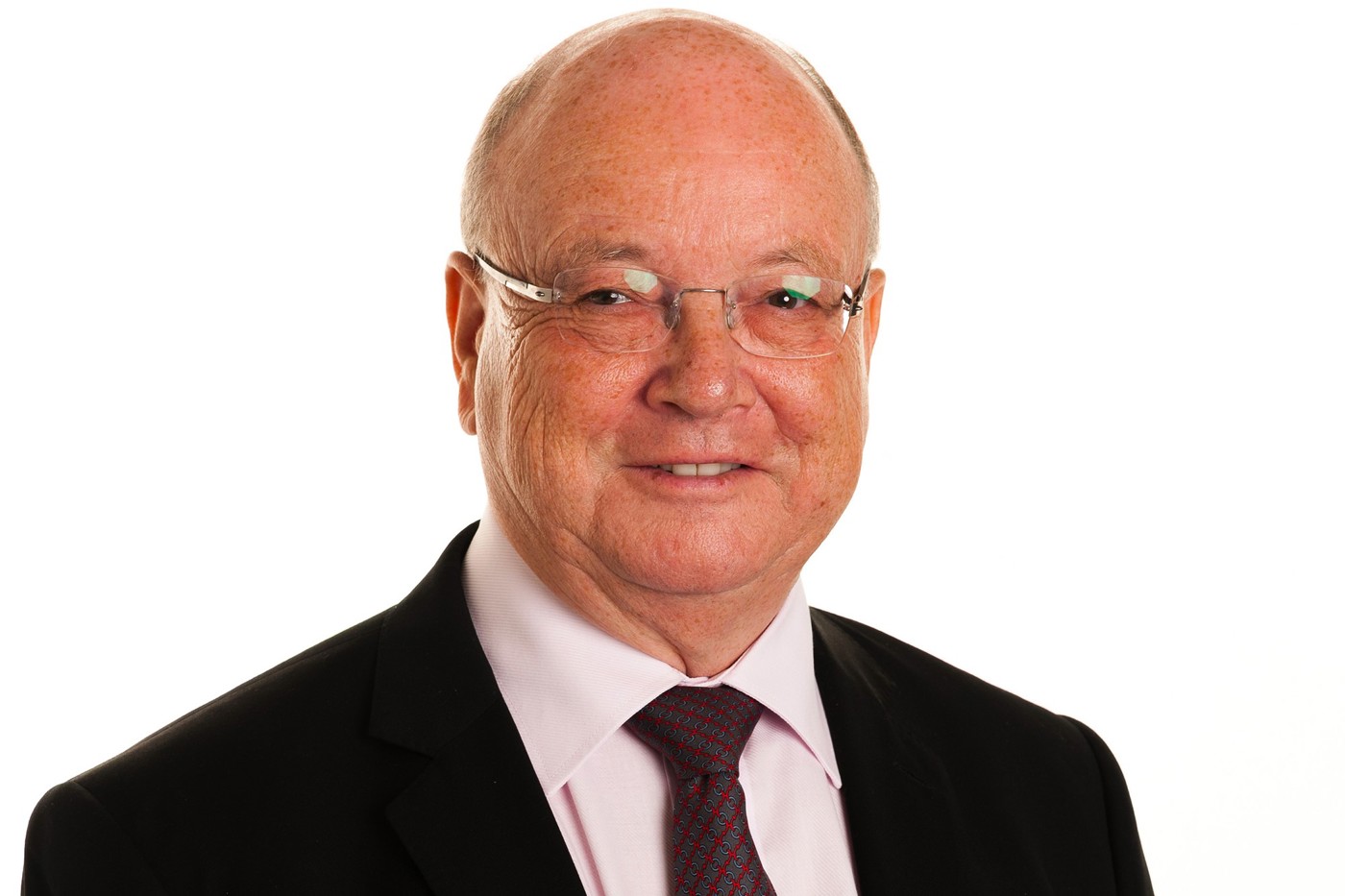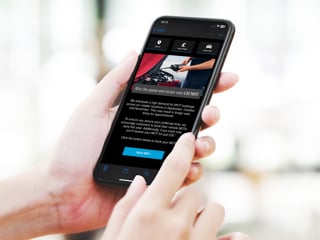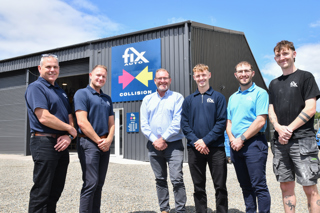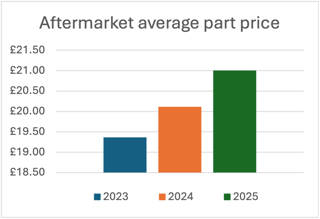What areas are you focused on in 2018?
Phillip Jones, managing director, Halliwell Jones Group: Survival of the fittest. Although we remain profitable, the challenges in terms of hitting registration targets and meeting Government legislation are concerning. We are very focused on capital expenditure, cash flow, level of stocks including new, the level of demonstrators and ageing stock levels.
Brian Gilda, chairman, Peoples: Making sure sales are as good as you can get them. There are lots of dynamics coming at us, some easy to solve, some not. The key for me is not sweating about the trivia and concentrating on the big-ticket items.
Daksh Gupta, chief executive, Marshall Motor Holdings: We are focusing on growth, which is probably a bit of a surprise given the market is down. We are talking about out-performing the market and how to improve our margins. We have been looking at how we can be more efficient, such as reducing our demonstrators, looking at the costs of our suppliers, goodwill, marketing, just anything around controllable costs. We are really focused on stock management, the level, the way we price it, purchase it and stock turn.
Jason Cranswick, commercial director, Jardine Motors Group: Innovation, acceleration and galvanisation. We are in a business and marketplace that demands all operators be more innovative – how we speed up the way we do things, our responses to customers, our development and processes, making sure we are taking everyone with us on the journey.
It’s scary when you see the pace of change. We want everyone to share best practice and find more common ways of working. We have some incredible relationships with our partners, who we also want to galvanise to ensure we deliver excellent performance.
Stuart Foulds, chairman & chief executive, TrustFord: Growth in new retail sales with new and updated products; continued fleet growth; increasing our used performance, expanded into all makes and older age profile.
With our ‘NOW’ concept , we can deliver a new or used car or commercial vehicle within an hour of a customer arriving. Currently, the number of customers driving away within the hour is about 5%. We want to get ‘take me home now’s up to 50%.
We are investing in online to deliver straight to a customer without the need to visit the dealership. It’s a game-changer.
What are the main challenges your business faces in 2018 and beyond?
PJ: The capital expenditure requirements of the manufacturer. At our build in Wilmslow, our cost projection is more than £20 million. It needs to be valued for loan purposes and I suspect the valuation will come out £4m-£5m behind the cost to build it. One of the biggest costs for all manufacturers is the level of investment for electrification.
BG: We are comfortable with the manufacturer and the product, but we are not immune to the vagaries of the market place.
There’s no denying that people are influenced by the negativity surrounding diesel and the Government hasn’t done us any favours, it has just created a tsunami of uncertainty.
We looked at cost reduction and revenue generation, and from March onwards we started to see the benefit coming through. We have been concentrating on commercial vehicles and aftersales.
DG: The big issue at the minute is the economic and political uncertainty as a result of Brexit, which has manifested itself in a declining market. If you look at our share price pre-Brexit, our business had a peak multiple of 12.8 times earnings and today we trade on 6.5. However, our earnings per share has grown from 12.9p to more than 30p in the past three years. We are confident we will come through and be much stronger for it.
JC: It’s blended retail, how we become an online and off-line retailer. There are a lot of external forces, especially in the online arena, new entrants to the automotive world, whether they are selling directly to the consumer or opening new ways of customers doing their research. We have chosen to try and understand that, we have to be open-minded and make sure when consumers come to our premises, it’s a superior experience.
SF: The market has toughened up and sales volumes are under pressure – so we need to keep a very tight rein on costs. There are cost challenges out of our control, such as utilities, pension costs and salary creep and there is the worry of an interest-rate rise which would hurt business.
WLTP (worldwide harmonised light vehicle test procedure) will potentially cause some turbulence in the new car market as manufacturers scramble to comply. No one really knows what the full impact will be at the dealer end.
One of the big challenges is diesel. Greg Clark, the business secretary, has said there is a place for diesel and it can make a large contribution to reducing emissions. It’s something the industry needs to push hard and get the Government behind us.
What is your view on the health of the new car and used car markets?
PJ: Without exception, there is too much volume in the market – stock levels are too high from every manufacturer. Everybody wants to lead the field and it can’t be done. You have got ambitious people at every level, and reducing volume is no way to further your career. I think they can earn more money by selling fewer cars because the volume of manufacturer support is huge, it’s millions, tens of millions.
Pre-registrations are a very serious problem, they have the potential with certain manufacturers to put the dealers out of business and potentially have the franchise fail in the UK.
BG: The new market has been overheated for a while and is probably coming back to its more natural position. It has been five fabulous years, but the new car market is not there. We have to deal with that and I suspect it’s going to be like that for a while. We have to fix our attentions on getting our correct volume share within that.
Used cars and aftersales are the areas of most opportunity. As an industry, we do work lengthy hours, but they are not necessarily the hours that suit the customer or employees. We have to find multi-shift answers.
DG: There’s no doubt it’s challenging out there. a growth-driven strategy to get through this period and part of that is driving traffic to our website and more enquiries through social media.
We see used cars and aftersales as a growth opportunity. At the end of last year, we had 67,500 customers on a PCP. When their PCP is due, the propensity to change is more than 90% – that has to be an opportunity.
JC: We are in the more stable end of the market, premium and luxury brands. There’s a softening of that end of the market, but not as great as the softening overall.
The bigger opportunity is used cars, main dealers have the opportunity to go out and attract conquest business.
Market pricing is a very important factor and we work very hard on our inventory pricing from day one. The interesting thing for us all is the shift in consumer behaviour to mobility as a service (MaaS) – consumers are very much going to a monthly, weekly or indeed daily payment, that will affect the new and used market over the coming years.
SF: While we do not do a great deal of pre-registrations, a lot of other manufacturers do and so put pressure on everyone who lives and dies on market share.
The used car market is seeing many new entrants, supermarkets with huge volumes of late-plate and, in some cases, pre-registered stock. Competition is ferocious and, to some extent, this leads to a profit race to the bottom. It is a bubble, and if it bursts there will be some big falls from grace.
The new car market is very tough. Manufacturers are driven by market share. As manufacturers look at their registrations and how they compare with their peers, one manufacturer decides to put a few thousand cars on the market and it puts market share at risk. If the cars go to supermarkets, they are at prices at which franchised dealers can’t compete.
How would you describe your personal management and leadership style?
PJ: If you don’t have happy staff, the business will suffer. It runs to a democratic management style, where we try to keep everyone happy. You must care – if you care, it demonstrates it’s not all about making money.
BG: I lead from the front. We have a very flat management structure. I want to be no more than two people away from the technicians and the salesman. We have 400 employees, so we don’t have acres of line management.
We use ‘Workplace’ by Facebook , where I communicate with 47 of my seniors.
We have been working with Ford on employee engagement for three years and we stopped it last year because we felt it just wasn’t hitting the buttons. Ford has come back with a reinvigorated programme, which looks very good.
DG: My team would say I’m a million miles an hour, very driven, very passionate and very numbers-focused, because I believe the devil is in the detail.
We have achieved the ‘Great Place To Work’ status for eight years running. We hold two conferences a year, internal communications on a regular basis, we have awards evenings and loyalty events. I am not in the business as much as I would like – to me, that’s the best part of the job.
JC: I energise my direct and broader team by remaining positive and engaged about the opportunities in the business. We work very hard to build a team of talented individuals across the business and make sure they are empowered to do the right thing. We have a bottom-up rather than top-down management style. We regularly meet the senior managers and leaders. We have an intranet, use bite-size communications and a lot of video – we make it relevant and very human.
SF: I visit all the dealerships – we have 65 locations and more than 3,000 staff. I chair a monthly best-practice meeting, where all the members of our senior leadership participate.
I do a regular video newsletter to all our colleagues, and a monthly blog. I always close my videos with ‘if you see me in the business, come over and say hello’. It’s amazing how many people come up to me to have a discussion.
We have achieved number 20 in The Sunday Times 100 Best Companies to Work For.
What are your group plans?
PJ: We have an exceptionally strong balance sheet, we are rock-solid. However, we just want to pause for the moment with the building of our new dealership at Wilmslow and let the economy sort itself out, particularly with Brexit. I am not looking to make any investment involving huge sums of money, unless an opportunity came along that you couldn’t refuse.
BG: The marketplace is going to change. Electric vehicles will come on – 2020 is a critical time and if I’m to be doing something between now and then I need to be very, very sure. We have thought very carefully about our strategy. The key for me is making sure the return on sales is acceptable and that I have the right people who are capable of getting us through the next period.
DG: In the past 10 years, this group has bought and sold 140 businesses. Within that, we have done 23 transactions – we have become one of the leading consolidators in the past decade. We have no gearing, we are debt-free, we have no pensions liabilities, our business is in fantastic shape financially.
We have ambitions to grow, but we will only do that where it makes strategic sense and within our brand partners, where the timing is right and if it makes financial sense for our shareholders.
JC: We are a bricks-and-clicks retailer and we will remain open-minded as to how our business evolves. We recently opened South London Porsche, an open point and a flagship facility; Jaguar Land Rover in Slough, a relocation; and Tunbridge Wells and Wolverhampton will be completed by the end of this year. Over the past 12 months, we acquired Bolton Audi to complete our market area in the north-west alongside Oldham, a new facility built in 2017.
SF: We are in the FMCG (fast-moving consumer goods) business and so it’s a moving target in all respects – if the right opportunity arises, we are there. I am excited about opportunities we have in online, fleet and used. We are expanding our portfolio of FordStores with multi-million pound investments in Bristol, Staines, Lisburn and Belfast (opening Q3 and Q4). We’re also expanding our facilities in Dagenham and Lisburn.
What are your views on your manufacturer partnership(s)?
PJ: This is where BMW are quite fair. They will slow things down and they are not pushing for things at the moment. The dealer development standards are a huge part of our expense – I do think some of the people who push these standards do so because they are told. I would prefer more business development managers in the franchise.
BG: We have to make sure that what the manufacturers suggest has the potential to work, therefore I work with them on the dealer council both here and in Europe.
Consumer offers have become very variable and sometimes get to where we want them at the end of a period. In terms of dealer standards, they are defined, probably wrongly in as much as the standards can be tripwires. We need manufacturers to produce the right product at the right price and to make sure we have the authority to look after those customers when things go wrong.
Fiesta is one of the best cars, the perfect example of the manufacturer building the right car that the customer wants, adding the offers so the customer wants to see it, but that doesn’t happen with every single vehicle, so it’s inconsistent.
DG: Different brands have different cultures. We operate in a cyclical business and as a result of uncertainty around Brexit, we have seen a decline in the marketplace. Manufacturers have reacted positively, they have reduced standards, reduced targets and increased bonus payments. Ultimately, the dealer network is an extension of the distribution network for the manufacturer, so it is in their best interests to ensure they have a viable network.
JC: We have strong relationships with our manufacturer partners, both sides work very hard to make sure it’s a positive relationship. We have seen the benefit of that in the way we have developed our network in recent years. It’s a partnership.
SF: Ford has always been at the forefront of consumer marketing offers. Through Ford Credit, we always have a suite of very competitive finance offers. We’ve been through a host of upgrades over the last couple of years. While expensive, they do set a level of quality.
What challenge has the General Data Protection Regulation (GDPR) posed and how have you managed it?
PJ: I welcome GDPR. The real concern is when you get it wrong, because fines are related to turnover and that’s disproportionate and unrepresentative of profits in the motor trade, which are now less than 1%. Implementing it has taken time.
BG: I gave it to one of my seniors and she has done a brilliant job. It has just been the most difficult piece . Is it required? Probably, yes. Is it required to that level? Probably not. But it is what it is and we have to do it.
DG: We got together a working party from all functions of the
business. We have only just rolled out an online assessment for 4,000 colleagues and in just four days we had 77% of the organisation complete it. We were planning this months ago, it’s about having a plan and the resources. I can see it is probably going to be a good thing overall in the long term.
JC: We started our GDPR preparations in Q4 2016. We have used it as an accelerant to better understand data in our business. It has not been without its challenges. Traditionally, data in the motor industry is held in a very fragmented structure, so we have worked hard with our DMS providers and our team across the business to create a much stronger environment in which we manage our data. We are working very well towards creating a ‘golden record’, a 360-degree view of our customers. It’s completely realistic, it’s just a huge body of work.
SF: It has been a bit of a nightmare to fully understand what is the best way to communicate with our customers. I’m pretty relaxed that we are fully compliant and it will be interesting to see what happens once the dust has settled. I think if you ended up in court following a complaint, provided you show your methodology, it will just be a wrist slap.
What are the opportunities for your business in 2019 and onwards?
PJ: We have created some very large aftersales facilities at two sites, where we have placed 19 ramps for the extra work coming. Initially, it will go to all day Saturday and possibly shift work – that will bring more efficiency because you are sweating the asset more by utilising more hours. This truly exceptional volume of used cars that are going to come is going to create more used car opportunities, more particularly all these cars will require servicing, so it creates a much bigger service parc.
BG: It’s an ever-changing world and manufacturers are going to have those retailers who are the best in the business to help sell their product. There will be fewer dealers – when I took over as chairman of the Ford European council, there were 3,500, now there are 2,200 – we would plan to be one of those retailers. The marketplace is going to change. 2020 will be the critical year when there will be an influx of battery-operated vehicles.
DG: We have good opportunities in used cars and aftersales. We are clearly in a very strong position to take advantage of any consolidation opportunities as and when they arrive. What people have got to start thinking about is some of the strategic challenges we face – electrification is definitely coming.
Clearly, we will not have oil filters anymore and for a lot of retailers that’s a significant profit contribution. What are we going to do to replace that? Should we start selling tyres better than we do, should we start diversifying the business model into bodyshops or commercial vehicles, should we be streamlining some of our operations? These are the questions we are thinking about for the future and the time to think about them is now.
JC: To see the business benefits of the innovations we are working on and to find ways of keeping the momentum we are building. The balance of online and offline will shift and the connected car will change the way we engage with consumers. I think there will be a shift to new MaaS solutions, those are the big trends. These shape a lot of our innovation thoughts. The human interaction will be incredibly important, as well as the digital.
SF: Nine months ago, our used car sales were sub-three-years-old and now we go back as far as 12. Previously, we were almost exclusively Ford and we are now multi-brand. Our used van stock has increased. We have changed our profile and diversity. I want to continue growth of our NOW initiative – this sets us apart from our peers. I also want to expand and develop our online platform. Using the NOW initiative and our Long Marston logistics business – 22 acres expanding to 25 acres, holding 7,000 vehicles – we will be able to undertake order-to-delivery within 24 hours and allow customers to track their delivery online .
For retail, we need more technology, but it’s achievable. That’s what I’m hanging my hat on.



















Login to comment
Comments
No comments have been made yet.